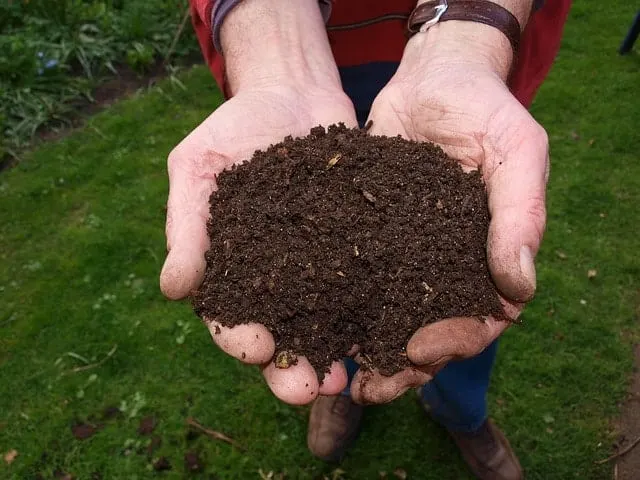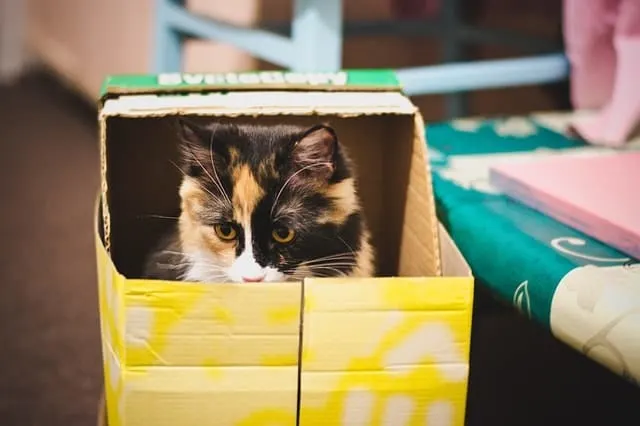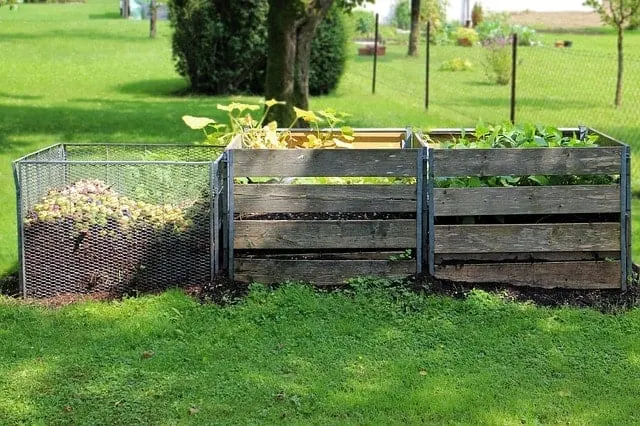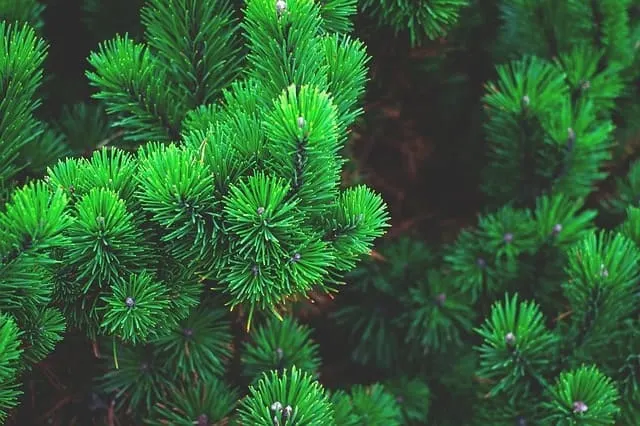You already know that dealing with cat litter is one of the inevitabilities of living with a cat. But typical cat litter is semi-toxic and contains components that have been harvested in ways that damage the environment.
Luckily, there are perfectly eco-friendly ways to dispose of cat litter without harming the environment.
In this article:
- Why Dispose of Cat Litter Eco-Consciously?
- Eco-friendly Cat Litter Alternatives
- Compost Your Cat’s Litter
Why Dispose of Cat Litter Eco-Consciously?
Cat litter that you buy from a store is not usually very environmentally friendly.
Although it is developed to clump and to combat odor, due to its contents it is rarely biodegradable.
More than this it also is often manufactured using techniques that are damaging to the environment.

Cat litter contains a number of different agents that can vary in their toxicity to both animals and humans.
More processed examples contain silica dust which has been listed as a carcinogen by the California state department.
Breathing too much of this in when changing it can be harmful, or even cancerous at worst (1).
With traditional products, there are not very many eco-friendly ways to dispose of cat litter.
Step One: Eco-Friendly Alternatives to Traditional Cat Litter
In order to find an eco-friendly way to dispose of cat litter, you will need to first use an eco-friendly cat litter.
Instead of using normal, clay-based cat litter, it is advisable to use natural cat litter.

Not only are these products more holistic to the environment, but there are also more eco-friendly ways to dispose of them.
Examples of these include:
Wood Pellets and Pine Litter
There are a number of different products available on the market containing completely natural ingredients. One option features pine or wood pellets/shavings, which have the benefit of giving off a pleasant odor as well.
We love using natural recycled wood shavings or plant fiber. They’re soooo much better than clay litter!
Homemade Cat Litter with Newspaper
It is also possible to make your own litter out of recycled newspaper.
It takes extra time and effort, but it is entirely cost-effective and doesn’t require the purchase of any extra materials.
Simply follow these steps to make eco-friendly cat litter at home and you’ll have an effective, fully-degradable alternative that will also tackle odors as effectively as any other.
Step Two: Eco-Friendly Ways to Dispose of Cat Litter & Cat Waste
One of the most eco-friendly ways to dispose of cat litter is to compost it.
The second most eco-friendly option is to use biodegradable cat litter and toss in the trash to biodegrade naturally in the landfill (without using plastic bags).
1. Compost Your Cat’s Litter
If you have a garden and enjoy working in it, you might find it suitable to compost your cat litter. If you do not currently have a compost heap, you will need to get one.

You can build, buy, or up-cycle compost bins quite easily. If you decide to build it, all it requires is a wooden box similar to a raised flower bed with enough space for your growing heap, as well as the further space to allow you to turn it regularly.
How to Compost Cat Litter/Poop
You will need to add your cat’s waste onto the pile. You should not add the litter if it is clay-based, sand-based, or crystalline as it will not biodegrade. A compostable cat litter, such as the sawdust or natural pine shavings are perfect for composting.
Make sure to compost your cat’s litter far from any edible plants, veggies, or fruits. For more on how to compost cat litter and cat poop, check out our guide on composting cat litter.
2. Do Not Throw Cat Litter Away in a Plastic Bag
We have all done it before and are guilty as charged. Throwing away cat litter in a tied-off plastic bag is a convenient way to dispose of cat litter, certainly, but it is not eco-friendly by any means.
3. Do Not Flush Cat Litter
Flushing your cat’s litter is not a very eco-friendly way of disposing of your cat’s litter either because of potential contamination of the bacteria Toxoplasma gondii.

Most indoor cats who have a balanced dry and wet food diet won’t come in contact with the bacteria, but outdoor cats who feed on raw meat, such as birds or mice, can contract the bacteria, resulting in toxoplasmosis.
If your cat’s poop is contaminated, this can result in intoxicating our waterways and resulting in the death of ocean wildlife (2). Not to mention it can make us humans sick, too.
If you don’t want to go to the additional effort of composting your litter, or you don’t have space in which to do it, that doesn’t mean you can’t be environmentally-conscious with your cat’s waste disposal.
Buying a sustainable, biodegradable litter, even if it does not end up being composted, is just as good an option.

Nicole Tozier
Sunday 1st of September 2019
You have an article on the best types of cat litter, and one of them says it's meant to be flushed. But then here you mention that flushing is not a good idea. Is it only okay under certain circumstances? I currently use biodegradable plastic bags.
Brittany, Paul, & Yoda =^^=
Monday 2nd of September 2019
Hey Nicole! That's right, some litters do say "flushable" but it's not really recommended. At least it's not the most environmentally-friendly way to dispose of cat litter.
Even biodegradable litters, like sWheat scoop, shouldn't necessarily be flushed despite its marketing "sWheat Scoop is flushable. It is our recommendation that you break clumps into smaller pieces, and let them soak for 20 minutes before flushing. For landfill-friendly trash disposal, please use a paper bag. View flushing instructions here. (Note: California residents should NOT flush any litter down the toilet according to CA Law." Because cat feces can transmit parasites that cause toxoplasmosis, pregnant women and people with suppressed immune systems should avoid any litter box maintenance.
Most people don't recommend it because of the Toxoplasmosis coming in contact with water supplies. As the Sierra Club states it, "First, it's not a good idea to flush anything from the litter box—even the sweetest, cleanest non-clumping pine—into a private septic tank because it could overburden the septic system. Poop and litter should not be flushed into municipal sewer systems either, because many of them cannot eliminate Toxoplasma, a rather nasty organism sometimes present in cat waste; its release into the ocean has been known to kill sea otters.."
Biodegradable bags are the best option at the moment, other than composting. I hope this helped clarify it a little. It's still an evolving issue and we're keeping our eyes on any updates!
MC
Wednesday 28th of August 2019
Won't the T. Gondii make its way to the sea via rainwater runoff regardless of what you do with it? It seems to me that composting/discarding waste without a plastic bag is just as likely to spread the parasites as flushing it down the toilet. Can you clarify how this works?
Brittany, Paul, & Yoda =^^=
Monday 2nd of September 2019
Hi Mallory, thanks for your question! I'll do my best to clarify although this issue seems to always be updating with new information and research. For starters, most indoor cats will never come in contact with t. gondii as long as they are fed a cooked diet and do not ingest infected meat (i.e. potentially infected critters).
Next, I will say that it is still okay to compost your cat's litter, as long as it is controlled (a raised garden bed, a plastic tub, etc). Especially because most of the time, the T. Gondii present in cats is the result of the cat ingesting an infected intermediate host - this is not typical for domestic house cats who live indoors and thus most cat owners and their household kitties won't come in contact with the parasite.
So, most of the infections / presence of t. gondii in nature can be directed to ferals or free-ranging cats in areas of high concentration. Urban areas with a high number of ferals are where rainwater runoff could pose a threat to sewer systems and eventually marine life and other wildlife.
The Toxoplasma gondii poses as dangerous when it comes in contact with food, soil, and other animals like mice and birds (intermediate hosts) which ingest the oocysts produced by the cat (host) and their infected feces. As such, t. gondii can be hazardous when left exposed to the elements which will further spread the bacteria/parasite - whether reaching marine life or simply infecting other rodents, soil, and so on. I imagine you've read about the seals off the Californian coast? I couldn't find a 100% study backing this claim. Flushing litter is often marketed by cat litter brands - even those that are biodegradable (like sWheat scoop) - but if you read on their site, it is illegal to flush cat litter down the toilet in states like California for the potential of it causing harm to the environment. And as the Sierra Club states, it's not recommended to flush anything from cat litter as it can be harmful to septic tanks. T. Gondii can live for weeks in hot and frigid climates.
So the most eco-friendly way of disposing of cat litter I think is still by controlled composting, and if that's not possible, a biodegradable plastic bag gives it the chance to biodegrade in landfill. And again, most cat owners will never have to worry about their cat contracting the parasite.
It helps to feed your cat a healthy, kibble/wet-food based diet and also keep them indoors as much as possible. Raw diets for cats are possible if served fresh and well-controlled to prevent the growth of bacteria.
Hope this helped clarify just a wee bit! xx Bri
mary Brinovec
Saturday 22nd of June 2019
i just saw and advertisement for a cat litter made of diatom. do you have any info on that type of product?
Brittany, Paul, & Yoda =^^=
Saturday 22nd of June 2019
Hi Mary! No, we haven't used that litter before, but it would make a great research topic for me to investigate! Which brand did you see advertised? The one I've heard of before was Skoon, but I haven't looked to see if it's eco-friendly, although diatomaceous earth is natural! Right now we're using Cat's Best cat litter made from plant fibre.
Olivia
Saturday 17th of November 2018
With no facility to compost then I have to bag and bin. I couldn't find any info on how long it takes for the toxins to become safe when I was researching cat litter. Composting definitely seems the way to go. I hope more pet parents get in to the habit of doing this. Thanks for the advice.
Brittany, Paul, & Yoda =^^=
Saturday 17th of November 2018
Right? We hope that the cat community can start composting too. It's tricky though, but worth the extra effort in our opinion!! xo